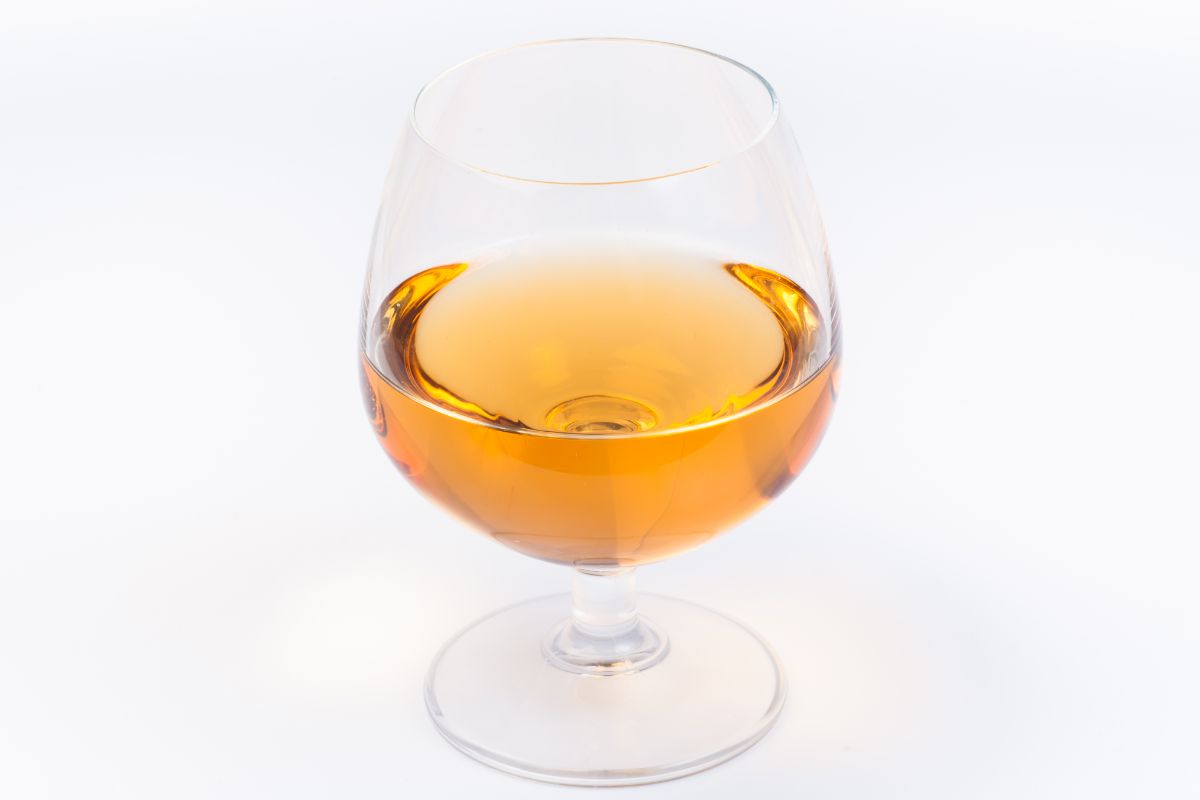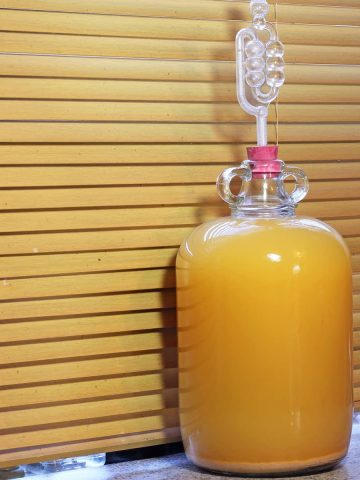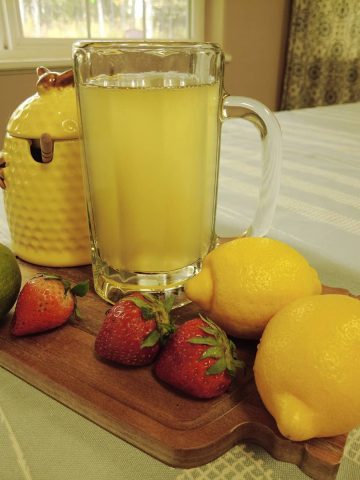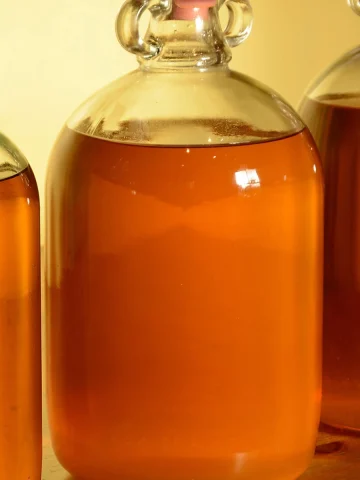Brewing your own alcohol is a very fulfilling goal to have. It requires patience, a little bit of technical knowledge, and a willingness to experiment with your own taste and creativity.
The end result can be disastrous at points, but when you get it right, the sense of fulfillment and joy you get from the beverage is worth every moment.
Mead is one of the oldest alcohols that you set about making, and it is beloved by many different people. It is also one of the easiest alcohols to make at home and doesn’t require many pieces of equipment to do so.
However, there is a question that many first time mead makers ask during this process, and that is: how long does it take mead to ferment? Is it a short or long time?
In this article, we seek to answer this question for you.
What Is Mead?
Mead is a type of alcohol made by fermenting honey and mixing it with water at the base level.
Most meads nowadays also add fruits and spices, with a few even adding grains and hops to give it a bolder flavor, but it is simply honey and water in most circumstances.
Depending on the length of fermentation, mead can be as weak as 3.5% or as strong as 20% and due to its flavor and strength it is often referred to as ‘honey wine’, though it is not a true wine, as it does not come from grapes.
Mead may well be the oldest alcoholic drink that exists in the world, still drunk today. It was made and drunk by people in tribal groups before the advent of farming, agriculture, and pottery in the pre-neolithic times.
To give you an idea of how far back that was, the neolithic was the final part of the Stone Age, ranging from between 20,000 BCE and 5000 BCE.
Before this time, mead is considered to have been developed and drunk. Considering that the Mesolithic and the Paleolithic (the periods before the neolithic) cover almost 3 million years in human evolution, it is incredible that this drink has survived at all.
How Long Does Mead Take To Ferment?
The primary fermentation of mead is actually longer than beer normally, due to the slow fermentation of the honey itself. Generally, a mead’s primary fermentation period will last around four weeks in total.
During this period, you should leave it alone for the most part and only check up on it every once in a while.
After four weeks, you can rack the mead into a new vessel. Racking is the process of running off the alcohol from the primary fermenting vessel and leaving a yeast or other material deposit at the bottom of the primary fermenter.
This deposit is full of dead yeast cells, and over time these will decompose. The decomposition will make your mead taste bad or just off, which you don’t want.
At this point – if you want – you can add flavorings, like fruits or spices, and leave for eight weeks for the flavors to diffuse. As a good rule of thumb, you should re-rack your mead until it is clear and not cloudy anymore.
This normally means at least two rackings, but it can be as many as four, however, going over four may make your mead less tasty so try to keep it below a four rack maximum.
You may like: Where to Find Honey Mead in Liquor Store
Factors That Affect Primary Fermentation Length
Primary fermentation is typically complete when all the yeast has eaten up all the available sugars and fermented them.
However, due to yeast being a collection of living creatures, there are many things that affect the fermentation process, especially a slow fermentation process like that of mead.
You know when primary fermentation is complete when one of two things happens.
The first is that your gravity reading has reached 1.000 – letting you know there are only a couple of residual sugars in the vessel – or when the attenuated range reaches 73% to 77%.
This is kind of a critical mass point, where fermentation will slow down rapidly before ceasing completely after this.
Reaching this point in a given time will ultimately depend on a number of factors like:
- The yeast’s alcohol tolerance, as alcohol continues to grow in the beverage.
- The yeast’s process of fermentation speed and whether it fluctuates.
- The quantity of sugars (honey) to water.
- The yeast’s attenuation levels.
- The health of the yeast itself when you added it.
You can probably see that most of these factors depend heavily on the yeast itself and how it is coping in the environment you place it in. As such, the best way to ensure a quick fermentation is to make sure your yeast is healthy and stays healthy.
However, many of these variables and hurdles only really occur during the primary fermentation period.
Once the primary fermentation is done, it takes about three months for the mead to be complete, and there isn’t really much variation from that three month benchmark.
The reason that most people want to keep aging mead or to rack it is that mead becomes better the more clear or the clarity it has. Cloudy mead will not be as nice, and it won’t have as strong an alcoholic content, but the choice is yours to make.
How To Check The Mead’s Primary Fermentation Is Done Without The Standard Testing Equipment
As we stated before, you can check the mead’s primary fermentation is done, by normally checking the gravity reading or attenuated range.
However, if you do not have the equipment for this – maybe you are making your mead old school – you may want to consider some alternative ways to see whether your mead is complete.
One way is to see whether your mead has stopped bubbling through the airlock of the vessel. If you aren’t seeing any bubbles, then CO2 is probably not being produced and so fermentation may have stopped.
To double-check this, shake the vessel gently to allow any trapped or caught CO2 to rise. If you see bubbling again, the fermentation is not complete and the mead will probably need a couple more days.
If you see no bubbling, it is a safe bet that there isn’t any more fermentation going on. This process is called degassing, and it is used in most fermentation processes to keep the yeast healthy.
Trapped CO2 can start to kill your yeast and in most fermentation procedures, there is a method of releasing this gas – for mead, there is the airlock, but many people also manually burp their product.
The only way to accurately know that the primary fermentation has been completed is through the use of a gravity reading or an attenuated range gauge, but this method is the next best thing to these more modern pieces of equipment.
How To Stop A Mead’s Primary Fermentation Early
Sometimes people want to stop the fermentation period early. Most of the time, this is with good reason, maybe they want a sweeter mead that is more preferable on their palate, or maybe they are trying to make a mead with a less alcoholic content.
In any case, there are a few ways in which you can halt the fermentation process, however all of them involve killing the yeast in your mead early.
If you do this, you cannot reconsider and try to keep the mead fermenting, once you kill the yeast your mead is how it is forever.
There are generally three methods for doing this:
- Rack the mead over Campden tablets and potassium sorbate: Many people are wary of this method, and they should be. You should only ever use these two substances as instructed, not any more than necessary, otherwise the mead will be undrinkable. However, for most people they are perfectly safe. Just make sure to use them together, as the Campden tablets stun the yeast in non-movement for a while and the potassium sorbate stops them reproducing, which effectively ends the fermentation process.
- Heat your mead to 150 degrees Fahrenheit for 5 minutes. This will kill the yeast without harming your newly made mead. Make sure it stays at that temperature for 5 minutes, no lower.
- Put the mead in the fridge. This won’t kill the yeast, but it will make them dormant and stop fermentation. You can then just drink it from the fridge, though once the mead reaches room temperature once again, the yeast will begin consuming sugars once more and so the fermentation process will begin again.
These are the best methods to stop fermentation early, but unless you have a good reason to do so, you should probably just let the fermentation continue to its natural conclusion for the best mead.
Conclusion
Mead normally takes around four weeks for the primary fermentation to end, and it can take up to three months before people feel that the mead has reached its best possible point.
However, if you wish to end the fermentation early, there are methods to do this as well.





